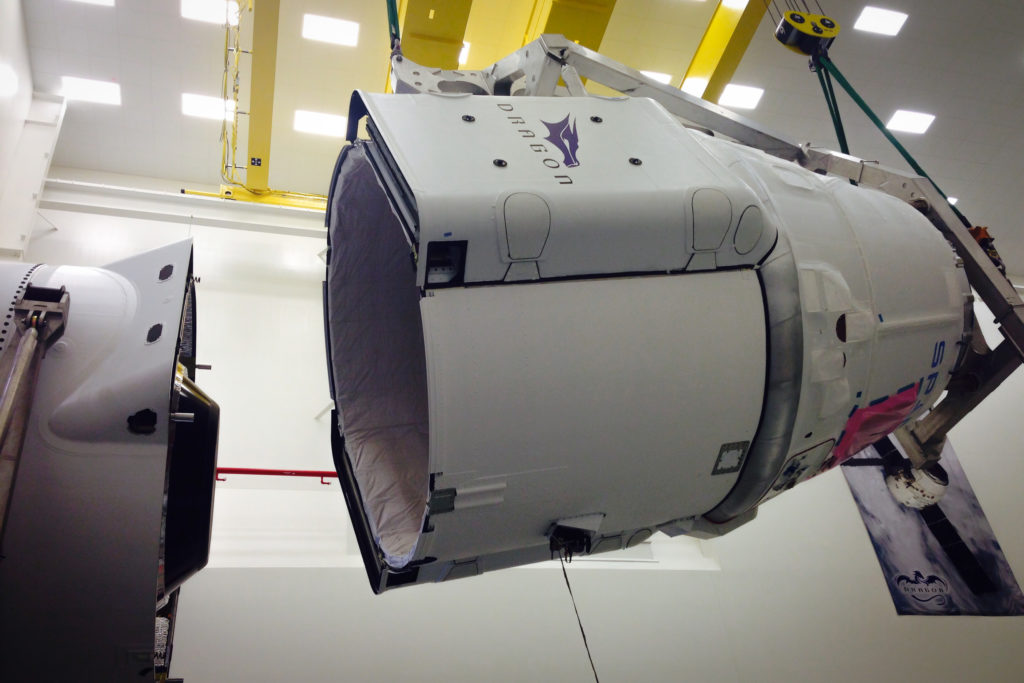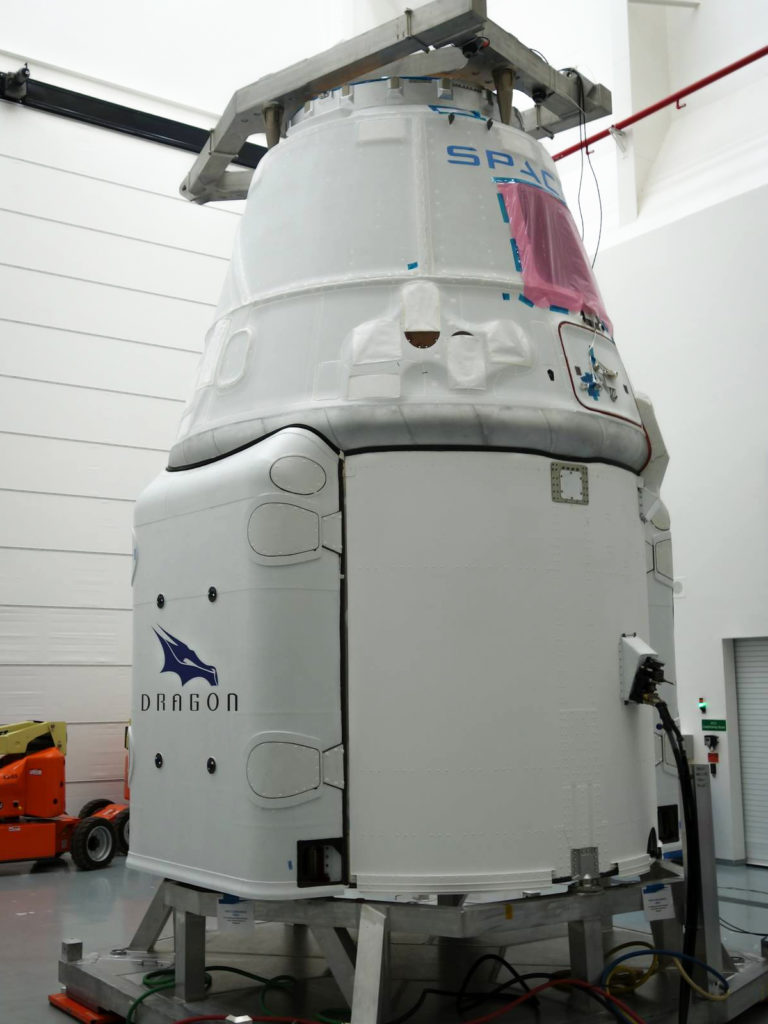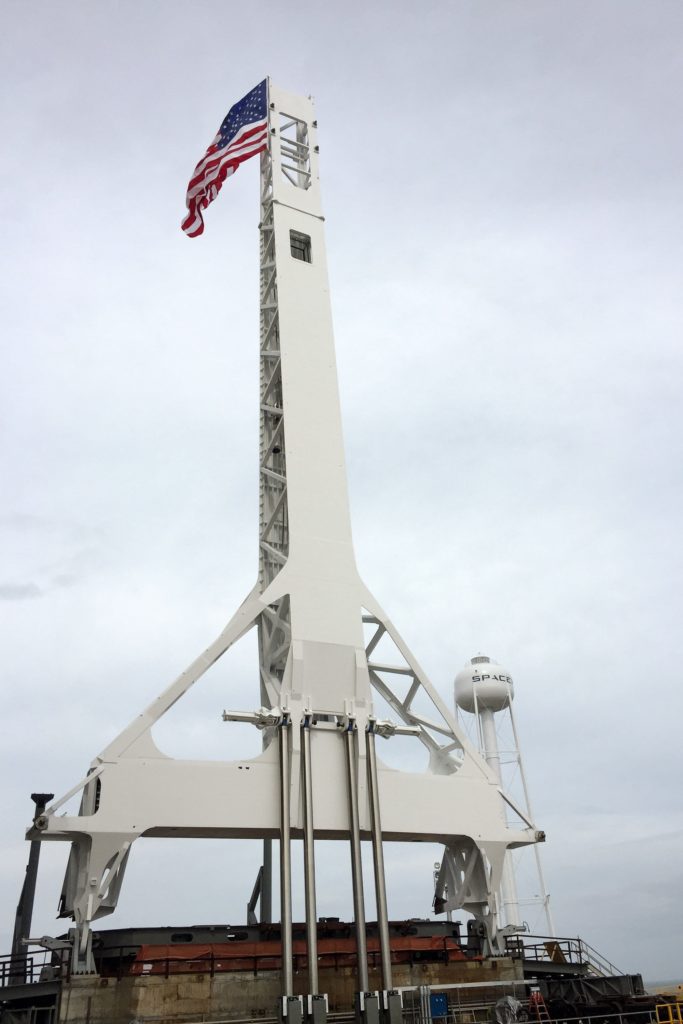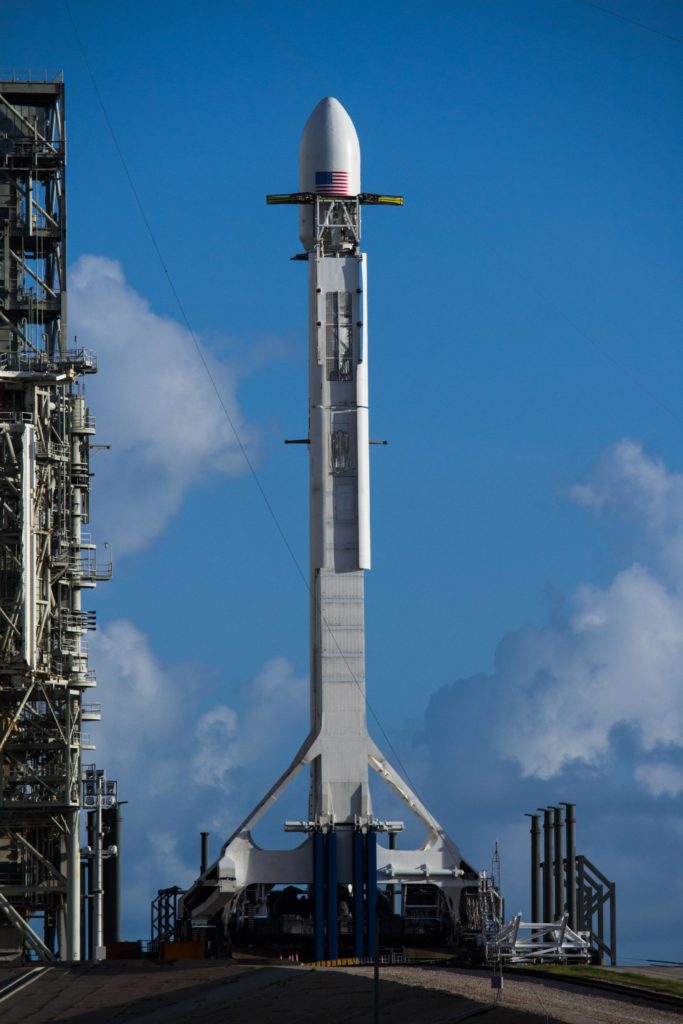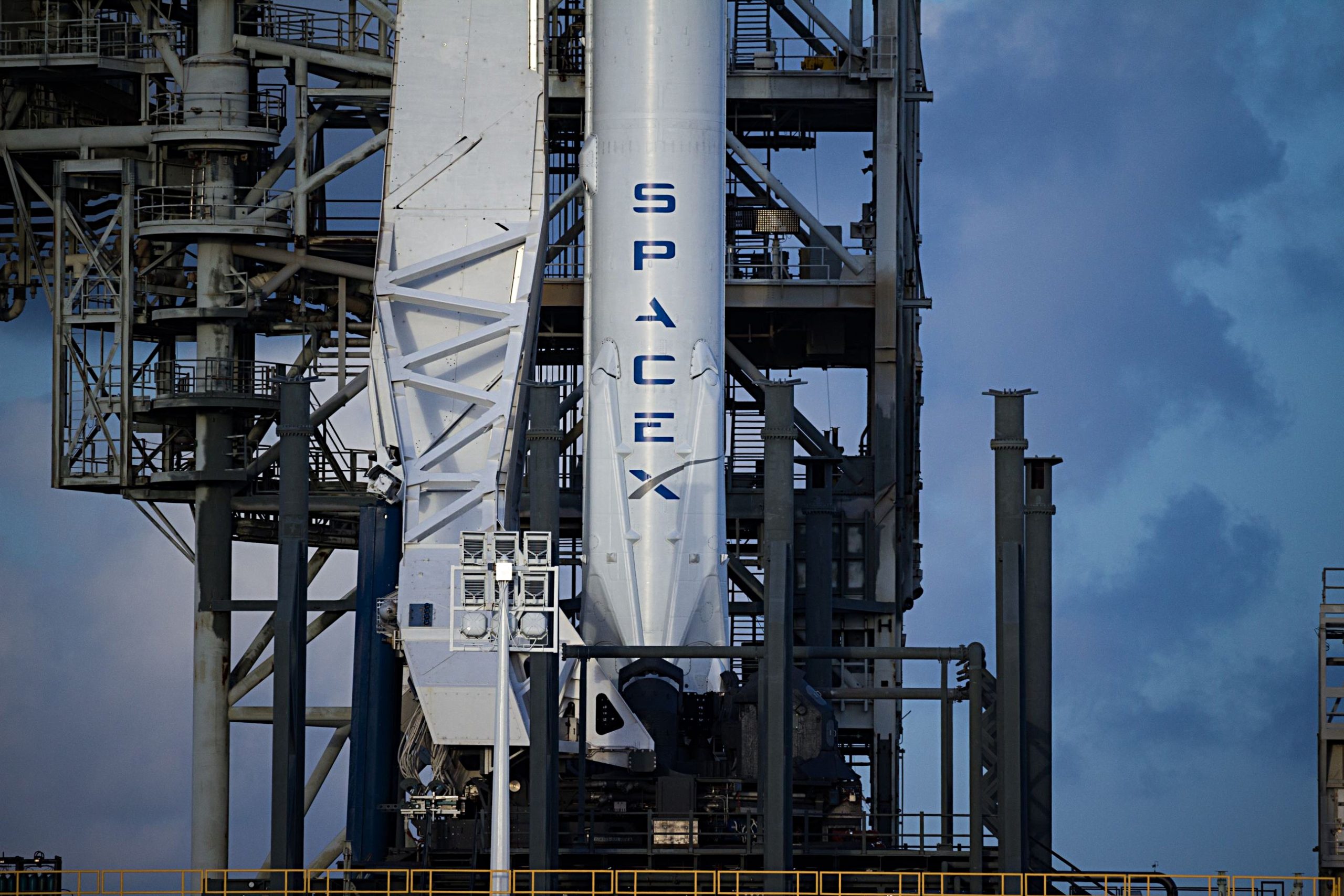
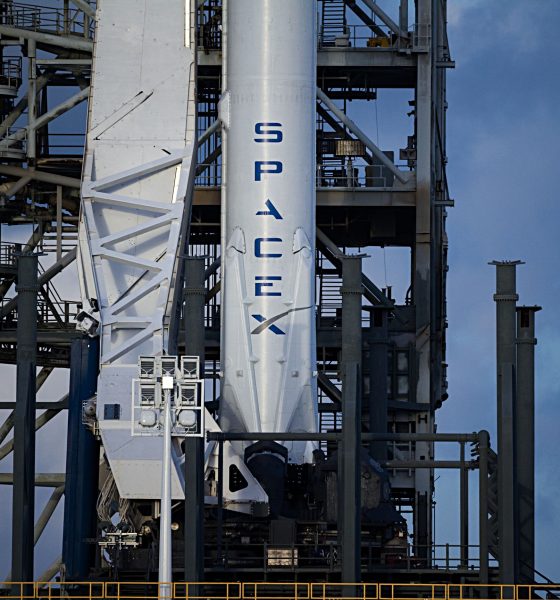
News
SpaceX prepares for space station supply mission as secret Zuma launch postponed
Zuma patiently awaits a new launch date
Just shy of two weeks ago, SpaceX announced the discovery of unspecified problems with a Falcon 9 payload fairing during routine quality assurance (QA) testing at the company’s Hawthorne, CA factory. The launch of Zuma, a deeply mysterious satellite with no clear manufacturer or customer, was subsequently delayed indefinitely, pending the results of an internal investigation into the aforementioned fairing defects.
Several days after SpaceX’s Zuma announcement, the Falcon 9 booster, second stage, and payload (often referred to as the “stack”) were rolled back into the pad facilities at LC-39A, verifying that a delay of at least several days would follow. This delay was both confirmed and denied in a confusing manner, with the Cape’s 45th Space Wing appearing to suggest that Zuma would not be impacted by a preplanned range closure in late November, although journalist Irene Klotz reported that Zuma was delayed until December, when maintenance was scheduled to end.
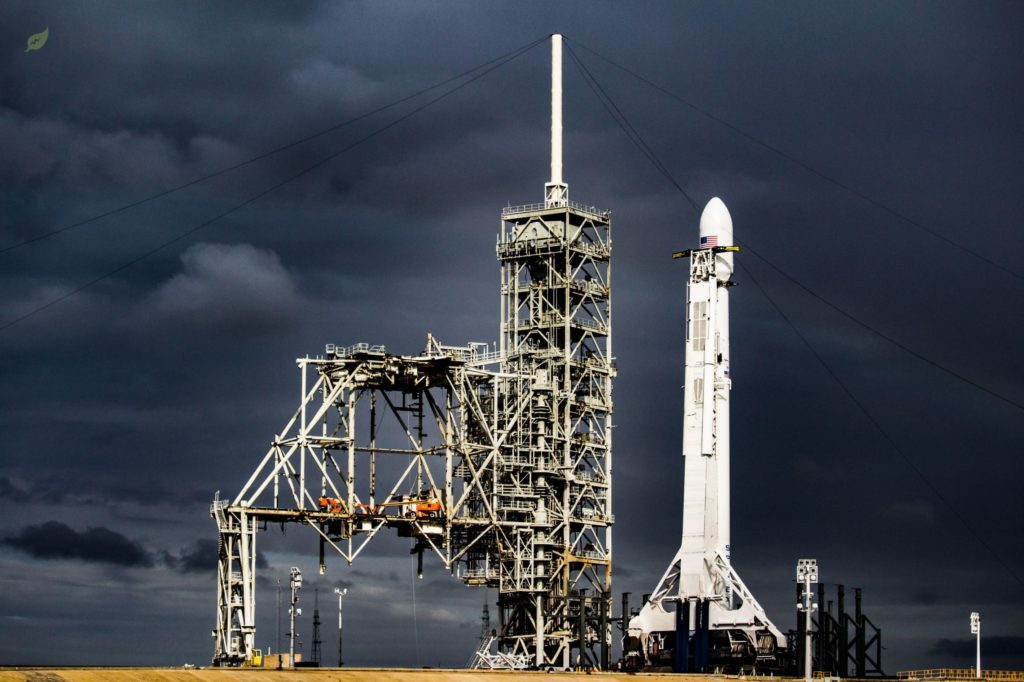
SpaceX’s mysterious Zuma payload and Falcon 9 1043 seen before stormy Florida skies. (Tom Cross/Teslarati)
All things considered, the month of November has been an unusually chaotic period for SpaceX and the Space Coast, and the chaos has almost certainly been exacerbated by the intense secrecy surrounding Zuma. As the sum total of publicly available information, these details indicate that SpaceX employees discovered a systemic defect or defects in recently-manufactured fairings, serious enough to indefinitely ground the company’s commercial launches. However, SpaceX recently opened press registration for the Iridium-4 mission, still apparently scheduled for launch on December 22 and further corroborated by the CEO of Iridium Communications, hinting that that mission’s fairing either predates the scope of the fairing investigation, or that the investigation and fairing groundings have arisen out of an abundance of caution above all else.
A Dragon stretches its wings
More importantly and perhaps more logically, SpaceX’s next Cargo Dragon mission to the International Space Station – CRS-13 – has not been directly impacted by fairing problems; Dragon missions do not require fairings. The CRS-13 mission, currently aiming for a static fire on November 29 and launch on December 4, will be exceptional for a number of equally thrilling reasons. In no particular order: CRS-13 will mark the first NASA-approved reuse of a Falcon 9’s first stage, in this case with the added aesthetic bonus that the Dragon will reach orbit aboard the same booster that launched CRS-11’s Dragon almost exactly six months prior, June 3 2017. Equally exciting, CRS-12 marked the final new Cargo Dragon launch, and CRS-13’s Dragon is a refurbished spacecraft, having previously flown the CRS-6 mission in late 2015.
- The CRS-6 Cargo Dragon being mated to its Falcon 9 launch vehicle in 2015. (SpaceX)
- This exact Dragon has been recovered from orbit, refurbished, and is now prepped and ready for another orbital mission on December 4th. (SpaceX)
Rather poetically, CRS-11 marked the first commercial reuse of an orbital spacecraft, and the booster that launched that mission, Falcon 9 1035, will now fly once more to lift the second-ever reused Dragon into orbit. If all goes as planned, SpaceX’s CRS-13 mission will arguably be the most-reused orbital-class mission in the history of spaceflight, with only the second stage and Dragon’s trunk being both new and expendable. Both the booster and Dragon likely required a fair amount of refurbishment, but if Elon Musk’s June 2017 statements remain accurate, SpaceX has probably progressed far along the reusability learning curve. Quoting Elon Musk and myself at the ISS R&D Conference in July 2017:
Musk said he expects the next Dragon reuse and all future reuses to save the SpaceX nearly 50% of the cost of manufacturing an entirely new spacecraft. Musk admitted that the first refurbishment of Dragon likely ended up costing as much or more than a new vehicle, but this is to be expected for the first attempt to reuse any sort of space hardware that must survive some form of reentry heating and saltwater immersion.
Indeed, CRS-13 will in fact be “the next Dragon reuse” after CRS-11’s success. If the spacecraft’s refurbishment does manage save SpaceX anywhere near 50% of the cost of manufacture, the mission will be an extraordinary accomplishment, above and beyond the already intense difficulty of refurbishing and reflying a several-ton (~4000kg empty) orbital spacecraft.
LC-40 pad repairs near completion
Even after the reuse of both the Dragon and Falcon 9 booster, CRS-13 will lay host to yet another milestone for SpaceX as the first mission to launch from the newly repaired Launch Complex-40 (LC-40), after the pad suffered widespread damage from a Falcon 9 failure during preparations for the launch of Amos-6. Little is known on the specifics of the damage suffered, but repairs have taken no less than 14 months and at a minimum required the fabrication, assembly, and qualification of entirely new Ground Support Equipment (GSE).
- Based on photos posted to social media, LC-40’s new TEL will be considerably different than the 39A’s white monolith, likely closer in form to the original it is to replace (seen here). (SpaceX)
- The TEL seen at LC-39A in early 2017. (SpaceX)
- LC-39A’s TEL and Falcon 9 seen before the launch of SES-11 in October 2017. (Tom Cross/Teslarati)
Under the umbrella of GSE are thousands of feet of precisely machined and welded piping and pumps, a new launch mount and transporter-erector-launcher (TEL) to carry Falcon 9 out of the integration facilities, the repair or complete removal and replacement of a huge volume of scalded concrete, and the repair or replacement of likely dozens or hundreds of other miscellaneous components destroyed in the intense fire that followed the Amos-6 incident. Nevertheless, as spotted on a social media platform by the author, the aforementioned TEL and launch mount were shown going vertical just a handful of days ago, further evidence that LC-40 is once again rapidly marching towards operational status.
The long-awaited reactivation and return to operations at LC-40 is itself arguably the most critical path ahead of Falcon Heavy’s inaugural launch, and modifications to the pad and TEL have restarted in light of Zuma’s indefinite delays, with SpaceX’s ever-productive and heroic ground crew taking advantage of extra down-time between launches. With Zuma now ~11 days past its scheduled launch date, the mission’s delay will likely result in additional delays to Falcon Heavy’s inaugural launch, which was reported to be aiming for ~December 29. This deep of a delay might also necessitate the transfer of Zuma’s launch from LC-39A to LC-40, depending on the customer’s flexibility and SpaceX’s own needs. Time will tell, and in the meantime, the mystery of Zuma and wondrous accomplishments of CRS-13 ought to sate the launch withdrawals of SpaceX fans for the time being.

Cybertruck
Tesla Cybertruck undergoes interior mod that many owners wanted

Tesla Cybertruck is significantly different from traditional pickups on the market in a lot of ways. However, one feature that was recently modified with its interior was a highly requested characteristic that is present in other trucks, but was void from Cybertruck.
Tesla went with a five-seat configuration with Cybertruck: two in the front and three in the back. The spacious interior is matched with plenty of storage, especially up front, as a pass-through, center console, and other storage options, but some Tesla fans wanted something different: bench seating.
Bench seating is popular in many full-size pickups and allows three passengers to sit up front. The middle seat is usually accompanied by a fold-down storage unit with cupholders.
Tesla decided to opt for no bench seating up front, despite the fact that it equipped bench seating in the unveiling in 2019. Interior photos from the unveiling event from nearly six-and-a-half years ago show Tesla had originally planned to have a six-seat configuration.
This was adjusted after the company refined the design:

(Tesla Cybertruck interior configuration in 2019)
Despite Tesla abandoning this design, it does not mean owners were willing to accept it. One owner decided to modify their Tesla Cybertruck interior to equip that third seat between the driver’s and passenger’s thrones.
The fit is snug, and while it looks great, it is important to remember that this does not abide byregulations, as it would require an airbag to be technically legal. Please do not do this at home with your own Cybertruck:
- Credit: @blueskykites
- Credit: @blueskykites
- Credit: @blueskykites
The Cybertruck is a popular vehicle in terms of publicity, but its sales have been underwhelming since first delivered to customers back in 2023. It’s hard to believe it’s been out for two-and-a-half years, but despite this, Tesla has not been able to come through on its extensive order sheet.
This is mostly due to price, as Cybertruck was simply not as affordable as Tesla originally planned. Its three configurations were initially priced at $39,990, $49,990, and $69,990. At release, Cybertruck was priced above $100,000.
This priced out many of those who had placed orders, which is the main reason Cybertruck has not lived up to its expectations in terms of sales. The adjustments to the specific features, like the removal of the bench seat, likely did not impact sales as much as pricing did.
This modification shows some creativity by Tesla owners, but also shows that the Cybertruck could always be the subject of a potential refresh to include some of these features. Tesla routinely adjusts its vehicle designs every few years, so maybe the Cybertruck could get something like this if it chooses to refresh its all-electric pickup.
Elon Musk
Tesla CEO Elon Musk drops massive bomb about Cybercab
“And there is so much to this car that is not obvious on the surface,” Musk said.

Tesla CEO Elon Musk dropped a massive bomb about the Cybercab, which is the company’s fully autonomous ride-hailing vehicle that will enter production later this year.
The Cybercab was unveiled back in October 2024 at the company’s “We, Robot” event in Los Angeles, and is among the major catalysts for the company’s growth in the coming years. It is expected to push Tesla into a major growth phase, especially as the automaker is transitioning into more of an AI and Robotics company than anything else.
The Cybercab will enable completely autonomous ride-hailing for Tesla, and although its other vehicles will also be capable of this technology, the Cybercab is slightly different. It will have no steering wheel or pedals, and will allow two occupants to travel from Point A to Point B with zero responsibilities within the car.
Tesla shares epic 2025 recap video, confirms start of Cybercab production
Details on the Cybercab are pretty face value at this point: we know Tesla is enabling 1-2 passengers to ride in it at a time, and this strategy was based on statistics that show most ride-hailing trips have no more than two occupants. It will also have in-vehicle entertainment options accessible from the center touchscreen.
It will also have wireless charging capabilities, which were displayed at “We, Robot,” and there could be more features that will be highly beneficial to riders, offering a full-fledged autonomous experience.
Musk dropped a big hint that there is much more to the Cybercab than what we know, as a post on X said that “there is so much to this car that is not obvious on the surface.”
And there is so much to this car that is not obvious on the surface
— Elon Musk (@elonmusk) January 2, 2026
As the Cybercab is expected to enter production later this year, Tesla is surely going to include a handful of things they have not yet revealed to the public.
Musk seems to be indicating that some of the features will make it even more groundbreaking, and the idea is to enable a truly autonomous experience from start to finish for riders. Everything from climate control to emergency systems, and more, should be included with the car.
It seems more likely than not that Tesla will make the Cybercab its smartest vehicle so far, as if its current lineup is not already extremely intelligent, user-friendly, and intuitive.
Investor's Corner
Tesla Q4 delivery numbers are better than they initially look: analyst
The Deepwater Asset Management Managing Partner shared his thoughts in a post on his website.

Longtime Tesla analyst and Deepwater Asset Management Managing Partner Gene Munster has shared his insights on Tesla’s Q4 2025 deliveries. As per the analyst, Tesla’s numbers are actually better than they first appear.
Munster shared his thoughts in a post on his website.
Normalized December Deliveries
Munster noted that Tesla delivered 418k vehicles in the fourth quarter of 2025, slightly below Street expectations of 420k but above the whisper number of 415k. Tesla’s reported 16% year-over-year decline, compared to +7% in September, is largely distorted by the timing of the tax credit expiration, which pulled forward demand.
“Taking a step back, we believe September deliveries pulled forward approximately 55k units that would have otherwise occurred in December or March. For simplicity, we assume the entire pull-forward impacted the December quarter. Under this assumption, September growth would have been down ~5% absent the 55k pull-forward, a Deepwater estimate tied to the credit’s expiration.
“For December deliveries to have declined ~5% year over year would imply total deliveries of roughly 470k. Subtracting the 55k units pulled into September results in an implied December delivery figure of approximately 415k. The reported 418k suggests that, when normalizing for the tax credit timing, quarter-over-quarter growth has been consistently down ~5%. Importantly, this ~5% decline represents an improvement from the ~13% declines seen in both the March and June 2025 quarters.“
Tesla’s United States market share
Munster also estimated that Q4 as a whole might very well show a notable improvement in Tesla’s market share in the United States.
“Over the past couple of years, based on data from Cox Automotive, Tesla has been losing U.S. EV market share, declining to just under 50%. Based on data for October and November, Cox estimates that total U.S. EV sales were down approximately 35%, compared to Tesla’s just reported down 16% for the full quarter. For the first two months of the quarter, Cox reported Tesla market share of roughly a 65% share, up from under 50% in the September quarter.
“While this data excludes December, the quarter as a whole is likely to show a material improvement in Tesla’s U.S. EV market share.“
